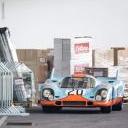Porsche 918 RSR Concept (Foto Ufficiali)
-
Contenuti simili
-
Porsche 357 Vision Speedster Concept 2023
Pubblicato da j,
- porsche 357 vision speedster concept
- porsche 357
- (e 3 altri in più)
- 6 risposte
- 722 visite
-
- 30 risposte
- 5879 visite
-
- 12 risposte
- 2102 visite
-
-
-












.thumb.jpg.902d2a4f20a129e92b6f6920407b81bd.jpg)
















Messaggi Raccomandati: